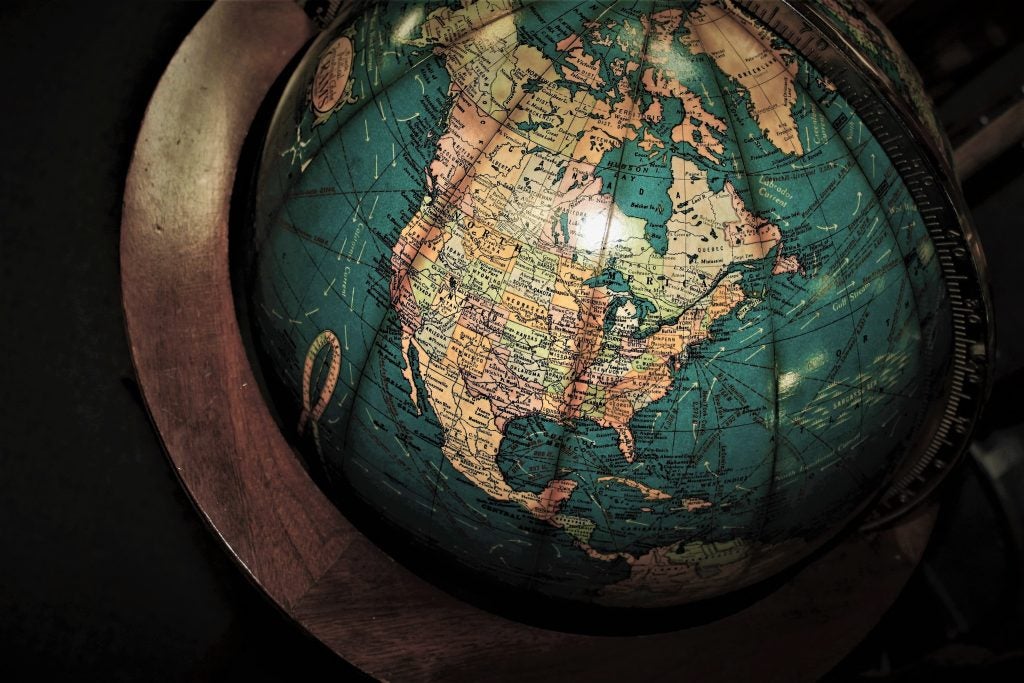
Sex tourism is defined as traveling with the primary motivation to engage in commercial sexual relations .1 Every year, millions of sightseers visit the sex tourism hubs of developing nations in search of sex, intimacy, exoticism, adventure, and freedom from social constraints. Many sex tourists seek an experience different than their everyday lives without the consequences or legal ramifications that accompany inappropriate sexual behaviors. In addition to the lack of legal consequences, sex tourism offers many benefits to foreigners including lower costs for sexual services, less stigma surrounding sex work, and anonymity and separation from one’s peer group.1 Sex tourists aren’t the only ones to benefit from sex tourism. The host countries of sex tourism reap fiscal benefits contribute a substantial amount of their Gross Domestic Product (GDP) due to their participation in sex tourism .4
Table of Contents
Historical Context
Sex tourism is theorized to have originated from two global phenomenon: colonization and military involvement. During the era of colonization, sexual relations between colonizer men and colonized women were banned due to beliefs of racial superiority and class division. However, as time continued on, sexual relations with colonized women were permitted as an incentive for colonized men and military officials. Although this era of direct colonial rule has since ended, this dynamic of racial and gender dominance as well as sexual ‘othering’ continues on within the sex tourism industry today. In a similar fashion, foreign military involvement has maintained this power dynamic through sexual relations with native populations. Although sex tourism is found within countries without histories of military intervention and colonization, research suggests there is a strong correlation of racial differences between buyer and seller in sex tourism.11 According to a 2016 study by Ending the Sexual Exploitations of Children (ECPAT), sex tourism isn’t just about sexual fulfillment. It often stems from the enjoyment western men gain from feelings of superiority in developing regions.4 The growth of female sex tourism can also be traced back to several decades ago when women traveled to the Caribbean to engage in sexual intercourse with Caribbean men.11 Today, locations such as Kenya and the Caribbean are popular female sex tourism destinations due fetishization of racial differences. Likewise, gay sex tourism can be dated back to a century ago when homosexual behavior wasn’t widely accepted in Western nations. Many Northern European, homosexual men would travel to Mediterranean countries with the purpose of engaging in homosexual relations in an environment free of societal disapproval. Research suggests that this anonymity and judgment free sexual exploration still remains a primary motivation in gay sex tourism today.11
Commercial Sex Around the World
The sex tourism industry is linked to the fastest growing criminal enterprise in the world. According to the ILO report of 2014, human trafficking generates over $150 billion a year. While only 19% of human trafficking victims are involved in sex exploitation, the sex trafficking industry accounts for nearly 66% of the overall profit.11 It is estimated that 20.9 million women and children are involved in sexual bondage. Due to the controversial and stigmatized nature of the sex tourism industry, many of the aforementioned transactions go undetected. Therefore, it is important to note that these numbers are mere estimates, derived from sets of incomplete data. In addition, it is important to understand the differences between sex tourism and sex trafficking. While human trafficking is often closely intertwined with sex tourism, not all sex tourism involves human trafficking. Many individuals who provide services to sex tourists are willing and consenting adults. Developing countries are often under extreme economic pressure to develop general tourism as a source of income, which positively correlates with the growth of sex trafficking study done by a university in Thailand estimated that the sex sector is nearly 12% of Thailand’s GDP and is projected to increase in the coming years.7 The governments of countries that profit off of sex labor, such as Thailand, are likely to turn a blind eye to the negative effects of sex tourism on the community due to the associated financial benefits. Many countries that attempt to place regulations on sex tourism merely witness sex tourism migrating to neighboring countries with more relaxed policies. Thus, countries that choose to enforce regulations not only lose a large source of income but they fail to reduce the prevalence of global sex tourism.4
Legality of Sex Tourism
Those involved in sex tourism are frequently denied the basic human rights to dignity, health, and security prescribed by the Universal Declaration of Human Rights.3 Many victims are assaulted, tortured, or imprisoned while working in the sex industry. Several international law enforcement agencies and non-governmental organizations (NGOs) have been working on extraterritorial legislation to prosecute sex offenders and protect sex workers in foreign countries. Some notable legislation includes:
- End Child Prostitution, Child Pornography, and the Trafficking of Children for Sexual Exploitation (ECPAT) introduced The Bill of Rights for Child Victims of Sexual Exploitation and Abuse.4
- Amnesty International published The Research Summary on Human Rights Abuses Against Sex Workers in 2016.
- Criminal codes in Australia, Norway, Sweden, Canada, and several other nations prosecute citizens who commit sexual offenses against minors even outside of their national territory.5
The criminalization of sex work within countries where sex tourism is common discourages victims of the sex trade from seeking help from law enforcement. This has made it more difficult for NGO to find and prosecute pimps, madams, abusive clients, and corrupt law enforcement. On the other hand, the Netherlands is one of the first nations to legalize prostitution in order to document and provide sex workers with basic labor rights and social security.1 This transition may be the first step to regulating the commercial sex industry and sex trafficking.
Popular Destinations for Sex Tourists
Sex tourism can be found almost anywhere in the world. However, the most attractive locations for sex tourists are countries with high rates of female poverty and inexpensive travel opportunities. Popular countries for sex tourism vary according to the needs and preferences of respective clients. For gay sex tourism, Brazil, Mexico, and Israel are popular locations; For female sex tourism, the Caribbean, Kenya, Southern European Countries, and Southeast Asian Countries are popular locations; For child sex tourism, Cambodia, India, Brazil, Mexico, and Brazil are popular locations. Overall, Thailand and the Philippines are heavily frequented by all kinds of sex tourists. As mentioned previously, developed nations are also home to sex tourists.11 Within the United States, cities such as Detroit, Michigan, and New York City are domestic hotspots for sex tourists.2
Economic disparities between Western nations and global peripheries can explain why certain nations transform into hotspots for sex tourism. Poor women in developing areas are more likely to enter the sex industry voluntarily if they have financial commitments (debts, dependents, family) and no other means of income. In one qualitative study of Sosùa (a tourist town in the Dominican Republic), sex workers are shown to have more economic mobility than most working men in the same social bracket.6 Prostitution has become a vital survival strategy for women in developing nations who lack other avenues of gaining sufficient income.
Demographics of Sex Tourism

It is difficult to identify the typical profile of a sex tourist due to the lack of reliable data and the stigma attached to sex tourism. In addition, what defines a sex tourist is varied from source to source. Some scholars define a sex tourist as any individual whose primary reason for travel is sex, while others define a sex tourist as any individual who partakes in a foreign nation’s sex industry while traveling.11 Generally, a majority of sex tourists are thought to be heterosexual, married, Caucasian men. Research suggests that sex tourists originate from developed regions of the world such as Western Europe, Australia, North America, and Japan.11 Although, the demographic of sex tourists has changed in the recent years as the sex tourism industry grows. As certain parts of Asia become wealthier, sex tourists are increasingly coming from Asian countries such as Taiwan, Korea, Japan, and more recently China. Middle-aged, heterosexual Western women and homosexual men are also adding to the consumer pool of sex tourism. Additionally, there has been evidence that sex tourists often come from middle to upper class backgrounds, a trait which facilitates traveling for the purpose of sex.10 Overall, sex tourists are diverse in terms of their economical, racial, and social backgrounds. Despite such differences, most sex tourists have similar motives for partaking in the industry.
A majority of the current data on sex tourism comes from the clients themselves. Therefore, building a profile of the individual who provide sex work is incredibly difficult. From the available data, it is believed that the majority of these individuals are children under the age of 12 and women in their late teens or early 20s. Male sex workers utilized in female sex tourism are often older, ranging from 15 to 26 years of age.11 The profile of the typical sex worker involved in sex tourism varies greatly from country to country. Overall, those providing sexual services are frequently impoverished people of color, capitalizing on the demands of western fetishization and “othering”.
Child Sex Tourism
Child sex tourism is one of the most controversial and scrutinized aspects of the global sex tourism industry. According to the UN Convention of the Rights of the Child, Optional Protocol on the Sale of Children, Child Prostitution and Child Pornography, tourists who have sexual relationships with a minor are in direct violation of the minor’s basic human rights.3 It is estimated that there are more than two million children involved within the sex tourism industry–a majority of such minors reside within Asian countries. Recent data estimates that there are over 800,000 minors in Thailand, 400,000 minors in India, 60,000 minors in the Philippines, and 20,000 minors in Sri Lanka that are actively participating in sex tourism.8 Child sex tourists are often men from wealthy, western nations with careers that facilitate travel. A majority of child sex tourists come from western nations due to the high age of consent in their respective countries. By traveling to developing countries with lower ages of consent, child sex tourists can engage in deviant sexual behavior with no legal ramifications. For reference, the countries with the lowest age of consent include Nigeria (11 years old), Angola (12 years old) and the Philippines (12 years old).4 Child sex tourists can be classified into three categories, the first being pedophiles with a specific interest in prepubescent children. The second category are preferential child sex abusers with an interest in prepubescent children. The third category of child sex tourists are situational child sex abusers. These child sex tourists do not consistently seek out minors but still engage in sexual intercourse with children.11
Impacts on the Community
Sex tourism is a gendered and racialized issue. The commercialization of sex has created harmful ideological constructs about female bodies and consent in many places such as Southeast Asia, Latin America, and Africa. These sexual and racial stereotypes contribute to the hyper-sexualization of the public domain. Travelers may view the sex workers in developing nations as overtly sexual beings or justify unacceptable behaviors by convincing themselves that there are no social repercussions regarding harassing, assaulting, or even raping native sex workers.
Treatment of Sex Workers
Oftentimes, Sex workers are trapped and brought into the sex industry using numerous methods. Some are lured away from broken homes by “recruiters” who promise jobs to poor women and children in the city. After being separated from their families, individuals are forced into a life of prostitution. Others are forced into prostitution by their own parents in a desperate attempt to earn extra money. Intense poverty sometimes forces parents into selling their female children to the sex industry in exchange for food, shelter, and other necessities.
Health Risks for Sex Workers
There are many risks associated with sex work. A majority sex workers do not have access to barrier methods of contraception and are easily exposed to sexually transmitted infections (STI). Moreover, sex workers are likely to be physically and mentally abused by their clients. Non-consenting prostitution can lead to depression and have detrimental effects on mental health. Some of the health risks for sex workers include:

- Increase risk of HIV/AIDS
- Lack of Accessibility to Safe Abortions
- Sexually transmitted infections
- Unwanted pregnancy
- Vaginal and/or anal tearing
- Physical, psychological, and emotional abuse
Sex tourists may also harbor the misconception that children are less likely to contract sexually transmitted infections such as HIV. In some developing countries there exists a distorted belief that having sex with a virgin will cure HIV; these notions are both unfounded and false. In fact, the average rate for HIV infected children rescued from brothels is 50%, and some rates are as high as 90%.9
The Internet and Sex Tourism
The rapid growth of the Internet has become a highly effective tool in promoting the sex industry. Websites on the Internet dedicated to the selling of commercial sex provide international forums where individuals can promote and sell sex tours, sometimes advertising packages for travelers complete with airfare, hotel, and directions to local brothels. The 20 most popular internet websites for sex tourism have been visited over two million times, with the most popular website accruing over 100 million visits.11 More than 100 websites promote teenage commercial sex in Asia alone. The website owners may charge an average of $100-$150 in membership fees and in return offer extensive information about the sex industry in specific locations. The Internet has made finding and selling sex worldwide much more accessible.
Ways to Help
There have been multiple attempts to alleviate the negative effects of sex tourism in affected nations. Organizations such as ECPAT and World Vision have been crucial in decreasing the prevalence of sex tourism on a regional level, while organizations such as the United Nations have been key entities in decreasing sex tourism on an international level. The United Nations World Tourism Organization (UNWTO) abides by a set of tourism guidelines — The Global Code of Ethics for Tourism – which condones any form of sex tourism.9 Additionally, the UN Global Plan of Action Against Trafficking in Person has made significant progress in combatting sex tourism. The plan focuses on preventing trafficking, protecting victims, and prosecuting offenders in addition to stressing the importance of obtaining more data and statistics on sex trafficking. In order to do so, the action plan has established a voluntary trust fund for victims of trafficking. Individuals can also make a difference in reducing sex tourism. Some of the easiest ways to combat sex tourism is simply spreading awareness of the issue itself and advocating for stricter regulations (in regards to sex tourism) in your respective country. Those involved in the hospitality and tourism industry can also play an important role in reducing sex tourism. EPECAT has a list of sex tourism/sex trafficking indicators for those within the hospitality industry to utilize.4 Some prominent indicators include customers who:
- Insist on little to no housekeeping
- Lack luggage and possessions
- Rooms are frequented by a large number of men
- Requests large number of towels and linens
- Pays in cash
- Rents rooms on an hourly or for less than a day
If multiple of these indicators are identified, individuals are encouraged to report suspicious activity to local law enforcement. In doing so, citizens can make a difference in combatting sex tourism within their own countries.
Concluding Remarks

The sex tourism industry is a complicated, wide-reaching, and multifaceted obstacle to overcome. As stated previously, the appeal of sex tourism stems from the racialized and gendered power dynamics present within such interactions; In addition to this, the blurred legality of deviant sexual practices in many host countries, such as sex with minors, creates a thriving market. While sex tourism provides many fiscal benefits to host countries, the sexual exploitation and associated health risks of vulnerable individual can not be justified. Thus, it is important for there to be a collective, calculated global response to the issue. There are many factors which affect the global response to sex tourism including public awareness, the amount of reliable data available, global governance frameworks, as well as legality enforcement. In order to decrease the prevalence of sex tourism, there must be a heightened awareness of this extreme violation of human. In addition to this, there must be an increased amount of effort between nations with consumers of sex tourism and host countries in order to dispel and dissuade travelers from searching for commercial sex. Furthermore, extraterritorial prosecutions and legal repercussions should be considered more seriously by international laws in the future. If efforts were made to increase educational, employment, and financial opportunities in host countries, the sexual exploitation associated with sex tourism would decrease dramatically.
References
- Clift, Stephen, and Simon Carter. Tourism and Sex: Culture, Commerce and Coercion. CENGAGE Learning, 2010.
- “Sex Trafficking Fact Sheet.” Equality Now, 14 Aug. 2017.
- Commission of Human Rights. “Universal Declaration of Human Rights.” United Nations, United Nations, 10 Dec. 1948.
- “Bill of Rights.” ECPAT International, Swedish International Development Corporation Agency.
- Curley, Melissa. “Combating Child Sex Tourism in South East Asia: Law Enforcement Cooperation and Civil Society Partnerships.” Freshwater Biology, Wiley/Blackwell (10.1111), 14 May 2014, onlinelibrary.wiley.com.
- Ehrenreich, Barbara, and Arlie Russell Hochschild. Global Woman: Nannies, Maids, and Sex Workers in the New Economy. Metropolitan Books/Henry Holt and Co., 2004. Selling Sex for Visas: Sex Tourism as a Stepping-stone to International Migration
- “GDP: the Sex Sector.” Forbes, Forbes Magazine, 6 June 2013.
- World Tourism Organization (2014) World tourism barometer. UNWTO.
- “Global Study On Sexual Exploitation Of Children In Travel And Tourism.” Human Rights Documents Online, May 2016,
- Whitney A. “Sex Tourism.” Encyclopedia of Social Deviance. Eds. Craig J. Forsyth and Heith Copes. Vol. 1. Thousand Oaks: SAGE Publications, Inc., 2014
- ILO, ““Forced Labour, Modern Slavery and Human Trafficking (Forced Labour, Modern Slavery and Human Trafficking).” Forced Labour, Modern Slavery and Human Trafficking (Forced Labour, Modern Slavery and Human Trafficking)
Last Updated: 14 October 2019.
